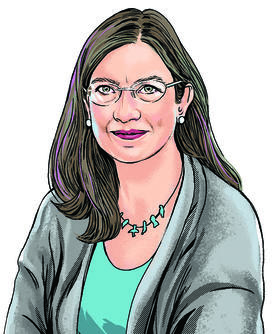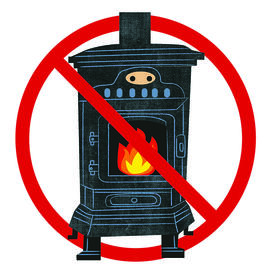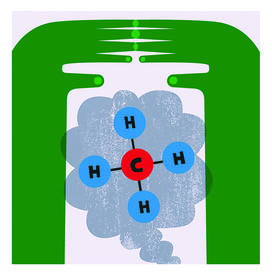Denise Mauzerall Takes On Worldwide Ecological Problems

Denise Mauzerall wasn’t sure whether she wanted to become a scientist or a lawyer. All she knew was that she wanted to have the biggest impact on the natural world that she could.“Since I was a kid, I’ve been committed to trying to figure out how to solve environmental problems,” says Mauzerall, a professor of environmental engineering and international affairs at Princeton.
Through her training and work experience, Mauzerall ended up combining both interests to tackle the world’s ecological challenges.
While studying for her bachelor’s and master’s degrees in chemistry — from Brown and Stanford, respectively — she served as an environmental consultant for firms in Washington, D.C., then spent more than a year working at the Environmental Protection Agency before beginning a Ph.D. in atmospheric chemistry at Harvard.
Now at Princeton, where she’s taught for 24 years, Mauzerall is again bringing together different fields to have maximum impact.
Mauzerall’s Work: A Sampling

Clearing the Air
In 2019, Mauzerall and her team reported the coal stoves that many families in rural northern China were using to heat their homes were producing about 40% of the fine-particle pollution in the area. While their findings convinced the Chinese government to begin removing the stoves, “the question became, what should they be replaced with?” Mauzerall says. In a 2021 study, the researchers determined that electric air source heat pumps, which operate like air conditioners in reverse, simultaneously eliminate local air-pollutant emissions while reducing greenhouse gas emissions — but they are expensive to purchase up front. “So our recommendation was that these heat pumps should be subsidized by the Chinese government to increase their uptake, [and they] should be operated using renewably generated electricity.”

Leaks to Tweaks
Mauzerall first began measuring the methane leakage from abandoned oil and gas wells in Pennsylvania and West Virginia in 2014. Six years and five additional studies later, her findings showed significant leakage and convinced the EPA to add the wells to its list of greenhouse gas emitters. This paved the way for President Joe Biden to allocate $4.7 billion in the latest infrastructure bill to plugging the wells. Mauzerall and one of her postdocs then measured the methane leakage from offshore oil and gas rigs in the United Kingdom. Their resulting 2022 report found that the U.K., considered a very “green” country, was underestimating these methane emissions by a factor of five.

Jolt for the Future
As a way to reduce greenhouse gas emissions and improve air quality, Mauzerall and her team have been studying alternative energy vehicles. “One thing that’s super clear now is that electrification — with increasingly decarbonized electricity — is critical,” she says, because decarbonized electricity, which is created through renewable sources such as sun or wind, or by nuclear power, is not only more efficient in powering vehicles than combustion engines, but also produces no air pollutants or greenhouse gases. “So we’ve been looking at possible future vehicle fleets in China and globally to try to quantify the air quality, health, and climate benefits of various transitions from internal combustion engines to electric and other alternative energy vehicles,” she says.











No responses yet